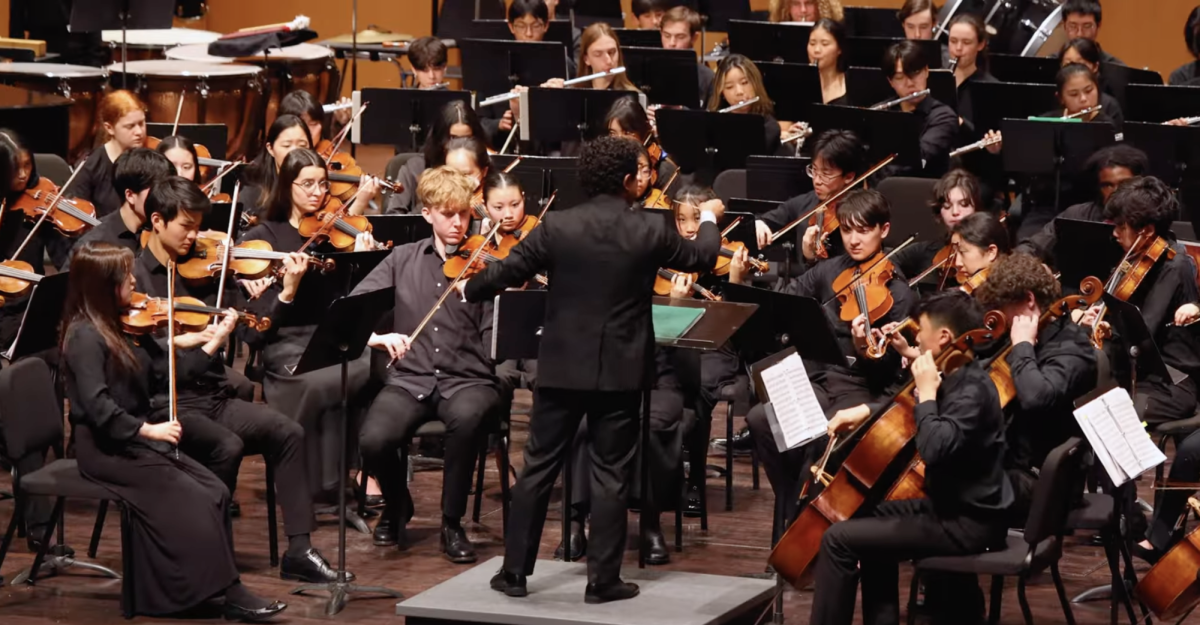This coming concert season, I, along with several other members of the Lakeside community, will be playing Mahler’s “Fifth Symphony” in the Seattle Youth Symphony Orchestra. It is one of Gustav Mahler’s most monumental works, still played today in both cinemas and performance halls worldwide. Many historians and musicians have argued that Mahler’s Fifth expresses a Stoic philosophy known as “Amor Fati,” Latin for “Love of Fate.” In the spirit of Valentine’s Day, I will be covering this seventy-minute, five-movement piece and what makes it so special.
At the time of the Fifth Symphony’s composition, Mahler had already gained widespread fame and reputation throughout Europe. He had a wife, Alma Schindler, and two daughters, he was appointed music director in Vienna — the music capital of the world — and his music was being performed all across Europe. Mahler wasn’t just a famous conductor or composer, however. His scientist friends often remarked on Mahler’s ability to grasp complex topics in their discussions. Thanks to them, he developed a keen and intricate understanding of the theories of physics and the laws governing biology and had debates with his philosophically-minded assistant about Nietzche, existence, and the soul.
The Fifth Symphony is one of Mahler’s more abstract and modern works, and in the words of conductor Rafael Payare, it “starts in a very dark place, where you have a funeral march at the beginning, then a very stormy second movement. Then the symphony gets into a kind of waltz, and the Adagietto movement is like a love letter. And the concluding Rondo final that is absolutely an ebullience of life, like drinking a glass of champagne.”
When Mahler began to write his Fifth Symphony in the summer of 1901, much of philosophical Europe was just starting to debate the idea of existence, and this is reflected in Mahler’s music. He switches between the polar ends of musical spectrums without notice, going from a funeral march to a waltz in the span of three movements, expressing in the best way an increasing restlessness and confusion plaguing modern life. In 1897, Mahler had switched from Judaism to Christianity to lead the Vienna Philharmonic — one of the premier orchestras in the world to this day, and earlier in 1901, had a close brush with death. In fact, had his sister not found him bleeding out in a bathtub after a hemorrhage, he would have died only an hour later. This experience was so striking for Mahler that he said “when I saw the faces of the two doctors, I thought my time had come.” He later remarked that “[I] wondered whether it would not be better to have done with it at once, since everyone must come to that in the end. Besides, the prospect of dying did not frighten me in the least… and to return to life seemed almost a nuisance.”
In his work, Mahler paints a picture of a midlife crisis, in the idea that a search for meaning is futile and its results will only lead to failure. At this time, some philosophers were expressing that life has no inherent meaning, and that’s where its beauty lies. If we have no prescribed purpose, we are free to shape our path. And in doing so, we realize that the meaning of life is not given to us — it’s created by us. This may explain why many title the Fifth’s fourth movement a “letter of love,” whether it is to his wife, or something much more abstract. Because, according to Mahler, if humans choose to live, we need something to hold onto in this mortal plane: an anchor.
In Mahler’s mind, this anchor is love. Not the romantic love one feels because of how pretty or handsome a face is, and not the lofty, idealized force of Mahler’s earlier works, but something much more deeply human — matured through suffering, yet untainted by it — a genuine understanding, appreciation, and affection for those around you. As we head into Valentine’s Day, let us be reminded that it is not just a celebration of romantics, but a celebration of the love that Mahler’s Fifth Symphony embodies: a love for the way things are good as they are bad, for they are linked, and a love that denies the evil presence of hardship and suffering but embraces them as a part of existence. A love for fate itself.


